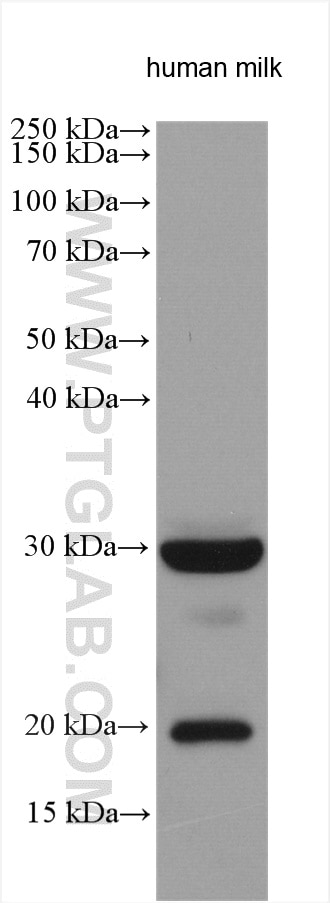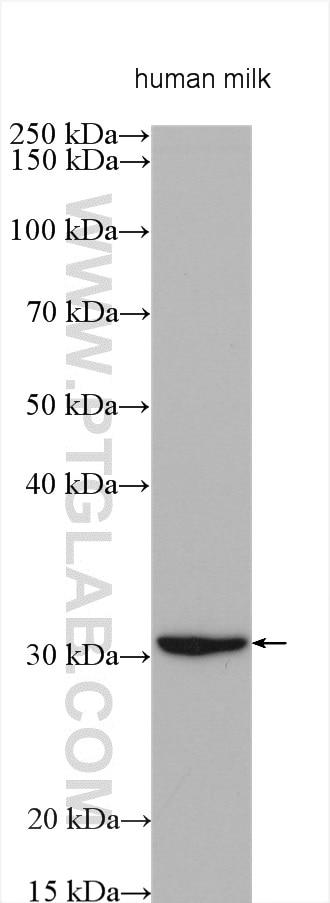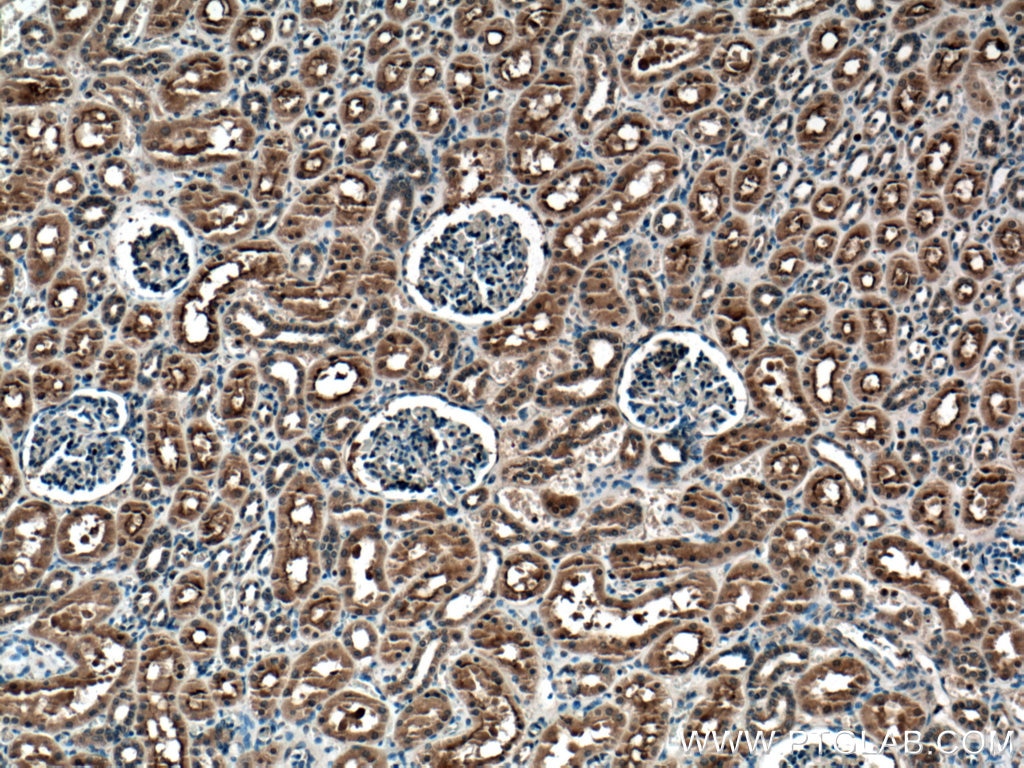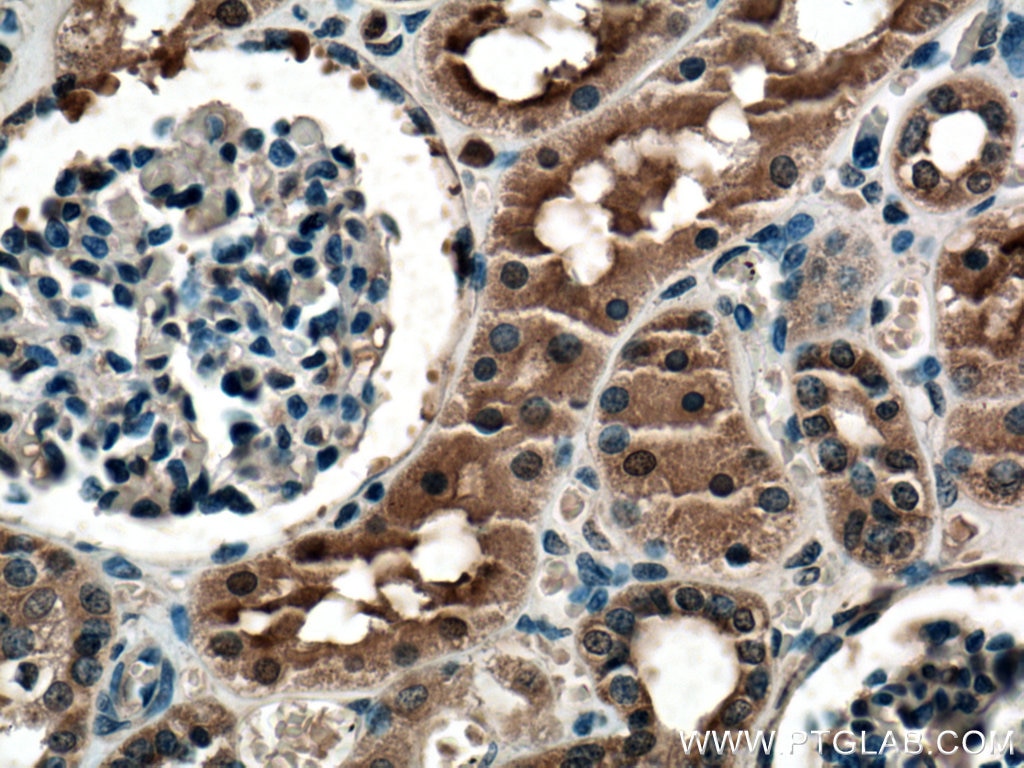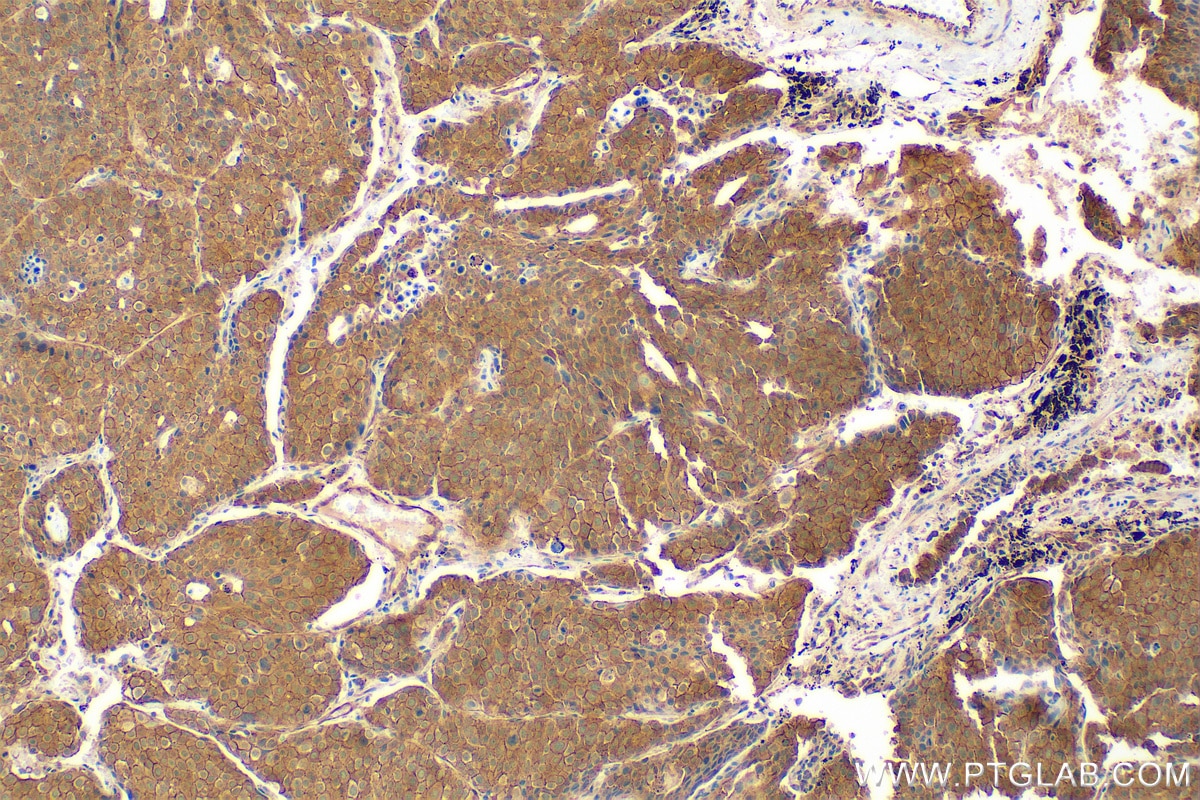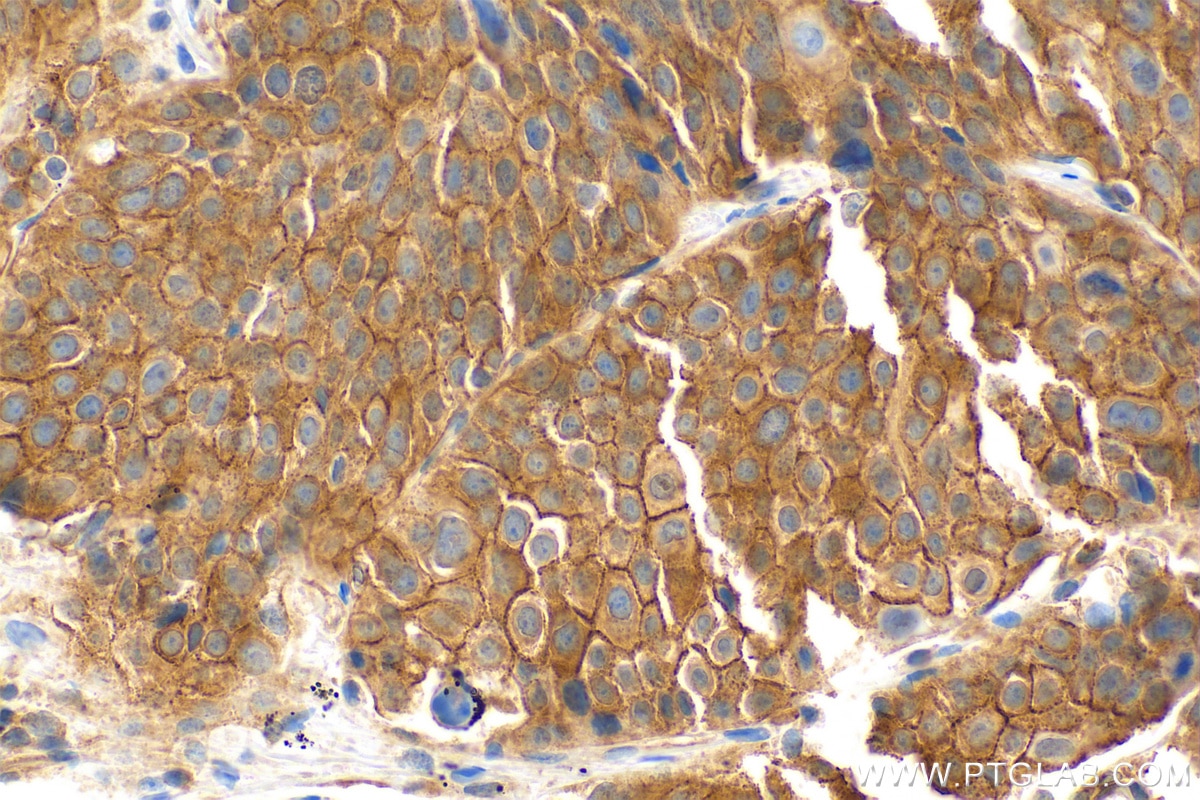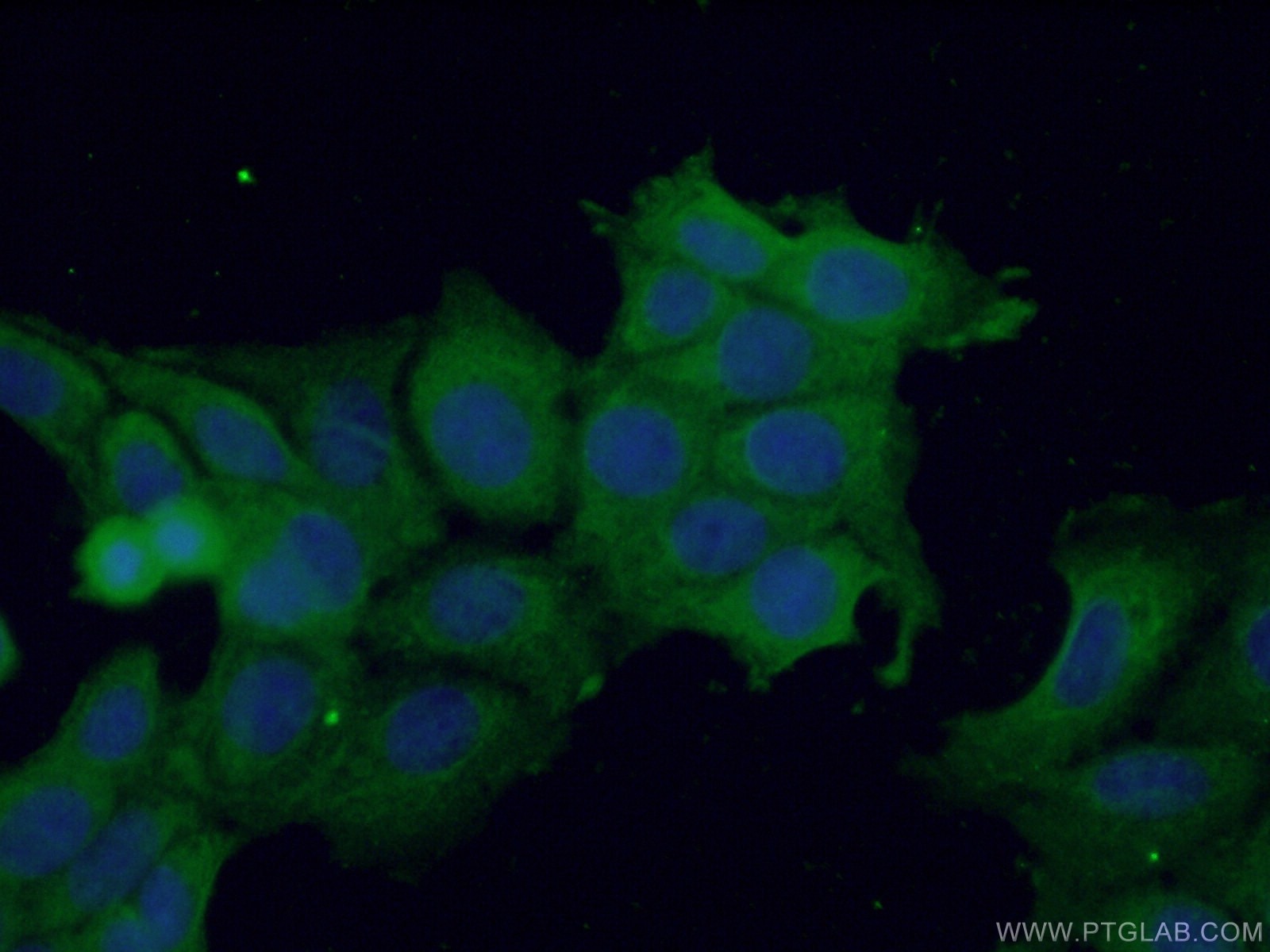- Featured Product
- KD/KO Validated
TRAIL/CD253 Polyklonaler Antikörper
TRAIL/CD253 Polyklonal Antikörper für WB, IHC, IF/ICC, ELISA
Wirt / Isotyp
Kaninchen / IgG
Getestete Reaktivität
human und mehr (1)
Anwendung
WB, IHC, IF/ICC, ELISA
Konjugation
Unkonjugiert
Kat-Nr. : 27064-1-AP
Synonyme
Geprüfte Anwendungen
| Erfolgreiche Detektion in WB | human milk |
| Erfolgreiche Detektion in IHC | humanes Nierengewebe, humanes Lungenkarzinomgewebe, humanes Lymphomgewebe Hinweis: Antigendemaskierung mit TE-Puffer pH 9,0 empfohlen. (*) Wahlweise kann die Antigendemaskierung auch mit Citratpuffer pH 6,0 erfolgen. |
| Erfolgreiche Detektion in IF/ICC | MCF-7-Zellen |
Empfohlene Verdünnung
| Anwendung | Verdünnung |
|---|---|
| Western Blot (WB) | WB : 1:500-1:3000 |
| Immunhistochemie (IHC) | IHC : 1:50-1:500 |
| Immunfluoreszenz (IF)/ICC | IF/ICC : 1:50-1:500 |
| It is recommended that this reagent should be titrated in each testing system to obtain optimal results. | |
| Sample-dependent, check data in validation data gallery | |
Veröffentlichte Anwendungen
| KD/KO | See 1 publications below |
| WB | See 9 publications below |
| IHC | See 1 publications below |
| IF | See 1 publications below |
Produktinformation
27064-1-AP bindet in WB, IHC, IF/ICC, ELISA TRAIL/CD253 und zeigt Reaktivität mit human
| Getestete Reaktivität | human |
| In Publikationen genannte Reaktivität | human, Maus |
| Wirt / Isotyp | Kaninchen / IgG |
| Klonalität | Polyklonal |
| Typ | Antikörper |
| Immunogen | TRAIL/CD253 fusion protein Ag25746 |
| Vollständiger Name | tumor necrosis factor (ligand) superfamily, member 10 |
| Berechnetes Molekulargewicht | 281 aa, 33 kDa |
| Beobachtetes Molekulargewicht | 33 kDa, 20 kDa |
| GenBank-Zugangsnummer | BC032722 |
| Gene symbol | TRAIL |
| Gene ID (NCBI) | 8743 |
| Konjugation | Unkonjugiert |
| Form | Liquid |
| Reinigungsmethode | Antigen-Affinitätsreinigung |
| Lagerungspuffer | PBS with 0.02% sodium azide and 50% glycerol |
| Lagerungsbedingungen | Bei -20°C lagern. Nach dem Versand ein Jahr lang stabil Aliquotieren ist bei -20oC Lagerung nicht notwendig. 20ul Größen enthalten 0,1% BSA. |
Hintergrundinformationen
TRAIL, also known as CD253 or TNFSF10 (tumor necrosis factor superfamily member 10), is a typical death ligand expressed on natural killer cells and cytotoxic T lymphocytes. This protein preferentially induces apoptosis in transformed and tumor cells, but does not appear to kill normal cells although it is expressed at a significant level in most normal tissues. TRAIL induces apoptotic cell death in cancer by binding to its functional death receptors, death receptor (DR) 4 (TNFRSF10A/TRAIL-R1) and DR5 (TNFRSF10B/TRAIL-R2) to activate the extrinsic apoptosis pathway. TRAIL also activates c-Jun N-terminal kinase (MAPK8/JNK) and the transcription factor nuclear factor-κB (NFκB). The binding of this protein to its receptors has been shown to trigger the activation of MAPK8/JNK, caspase 8, and caspase 3.
Protokolle
| PRODUKTSPEZIFISCHE PROTOKOLLE | |
|---|---|
| WB protocol for TRAIL/CD253 antibody 27064-1-AP | Protokoll herunterladen |
| IHC protocol for TRAIL/CD253 antibody 27064-1-AP | Protokoll herunterladenl |
| IF protocol for TRAIL/CD253 antibody 27064-1-AP | Protokoll herunterladen |
| STANDARD-PROTOKOLLE | |
|---|---|
| Klicken Sie hier, um unsere Standardprotokolle anzuzeigen |
Publikationen
| Species | Application | Title |
|---|---|---|
Stem Cells Transl Med Site-Specific Integration of TRAIL in iPSC-Derived Mesenchymal Stem Cells for Targeted Cancer Therapy. | ||
Int J Pharm Fusion of an EGFR-antagonistic affibody enhances the anti-tumor effect of TRAIL to EGFR positive tumors. | ||
Arthritis Res Ther IL13Rα1 protects against rheumatoid arthritis by combating the apoptotic resistance of fibroblast-like synoviocytes. | ||
Cell Biosci Long noncoding RNA TANCR promotes γδ T cells activation by regulating TRAIL expression in cis.
| ||
J Nat Prod Sanggenon C Suppresses Tumorigenesis of Gastric Cancer by Blocking ERK-Drp1-Mediated Mitochondrial Fission | ||
Phytomedicine Evodiamine inhibits ESCC by inducing M-phase cell-cycle arrest via CUL4A/p53/p21 axis and activating noxa-dependent intrinsic and DR4-dependent extrinsic apoptosis |
